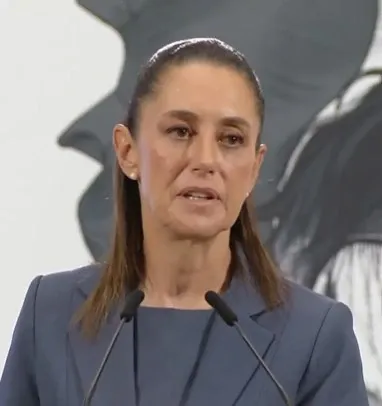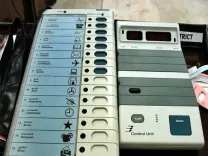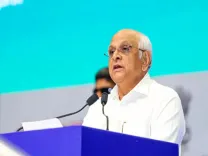Why Did the Mexican President Reject New US Border Wall Construction?

Synopsis
Key Takeaways
- Claudia Sheinbaum opposes new US border wall segment.
- Construction considered a unilateral action by the US.
- Mexico emphasizes cooperation over barriers.
- New tariffs on Mexican goods implemented by Trump.
- Construction involves 9.6 km of steel posts.
Mexico City, July 19 (NationPress) Mexican President Claudia Sheinbaum expressed her firm disapproval regarding the initiation of a new segment of the US border wall in New Mexico, characterizing it as a unilateral action by the US government.
During her regular press briefing on Friday, Sheinbaum highlighted that Mexico is not associated with the endeavor and is not providing any funding, as reported by Xinhua news agency.
"This is being constructed independently by them. We do not endorse the wall. We have established a secure border through collaboration and coordination, rather than barriers," she stated.
Sheinbaum identified the construction as a decision taken solely by US President Donald Trump and reiterated Mexico's inclination towards developmental cooperation and the respect for Mexicans residing in the United States.
This week, the Trump administration commenced a new phase of building a secondary border barrier between Santa Teresa, New Mexico, and Ciudad Juarez in northern Mexico.
The initiative involves 9.6 kilometers of 9-meter-high steel posts positioned behind an existing 5.5-meter fence.
Earlier this week, President Trump enforced a 17 percent tariff on fresh tomatoes imported from Mexico.
He also declared that his administration would impose a 30 percent tariff on goods from Mexico and members of the European Union starting August 1, targeting two of the US’s primary trading partners.
Trump posted individual letters on Truth Social to President Claudia Sheinbaum Pardo and European Commission President Ursula von der Leyen notifying them of the tariff percentages.
In his correspondence with Sheinbaum Pardo, Trump referenced the influx of fentanyl across the southern border, which was the initial justification for a 25 percent tariff he enacted on Mexican imports earlier this year.









